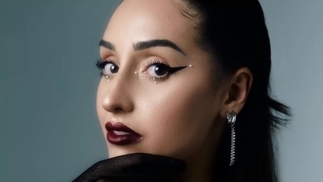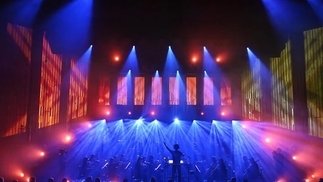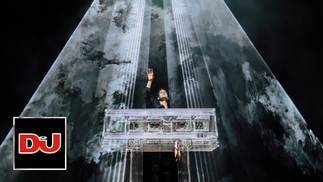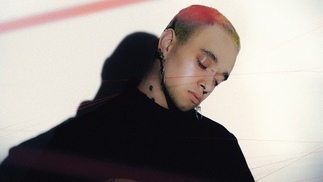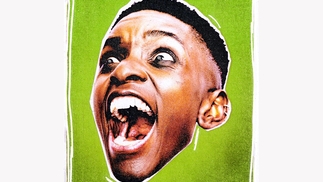EXPERT MIC CONTROLLERS
MCs were often maligned in the early days of drum & bass, but nowadays it's pretty much universally accepted that a renegade mic-spitter is a crucial part of the show.
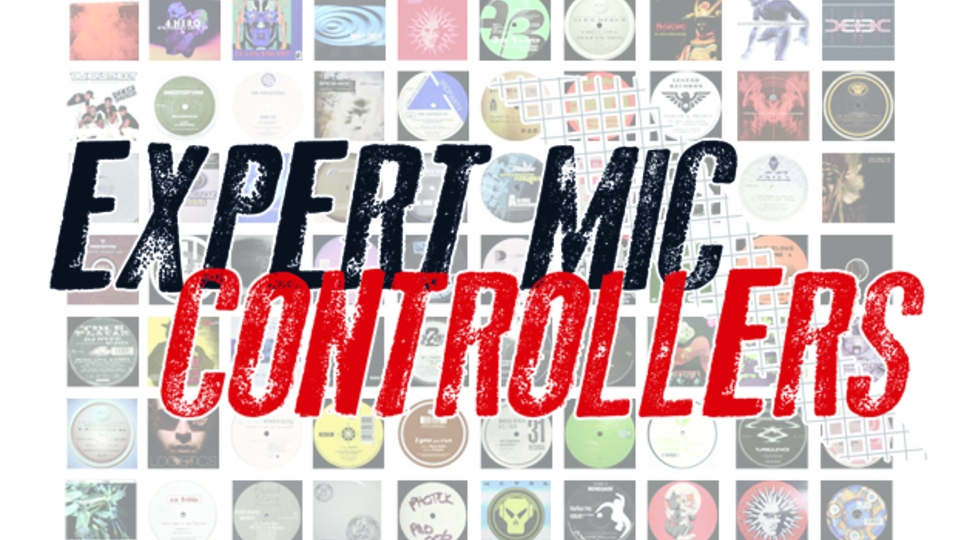
“There is no other music in the world where an MC stands on the stage for an hour and continuously sprays lyrics with such clarity and power over so many frequencies,” Eksman, one of the d&b scene's foremost MCs, tells DJ Mag. “The life and evolution of the drum & bass MC has grown from strength to strength over the years, and I have no doubt that down the line many more great things are in store for the future generation of MCs in our music.” Undoubtedly so. The role of the drum and bass MC has steadily progressed simultaneously with the scene it resides in, although in the early days MCs experienced negativity from some DJs. But the MC has fought for its corner, and now overwhelmingly basks in the same golden glory as the DJ.
When jungle was still a twinkle in acid's eye, MCs began hosting raves with a Cock-er-ney twang, encouraging ravers to “'Ave it!” With little lyrical skills at first, their purpose was to bridge the gap between the DJ and the crowd. Meanwhile, on the reggae side of town, soundsystems were featuring MCs with a style more similar to the chatting we know today. As scenes divided and merged, so did the style of MCing, and we're now left with what has grown from those seeds.
There is an extensive list of MCs that have made an impact on the drum & bass scene, and many are still riding the mic at raves each and every weekend. Fearless, Bassman, Cleveland Watkiss, The Ragga Twins, Det, Moose, Dynamite, Skibadee, Darrison, Conrad, Stamina, DRS, Wrec and GQ are just a few of the many, and Kool FM's Eastman has been credited with pro-actively pushing forward the fusion of ragga MCs and rave music through his sets on the infamous pirate station.
But speaking with performers and fans about the history of MCs, one name appears again and again — the late, great Stevie Hyper D. “He was the first MC I remember making an impact on d&b,” begins IC3, perhaps the scene's friendliest MC. “Stevie Hyper D had everything — the lyrics, the flows, the hooks. He would turn jungle and drum and bass tracks into full-on tunes. Certain tunes you would hear and say, 'I remember this track where Stevie Hyper D would have the set lyrics', which had a massive impact.”
STEVIE HYPER D
“When I was growing up, I remember hearing Rebel MC and Tenor Fly as recording artists on tracks such as ‘Tribal Bass’ and ‘Wickedest Sound’ in about 1991,” reminisces Eksman, award-winning MC and founder of the Overload events brand. “When pirate radio started to become popular in the early '90s, MCs such as Fearless and Shabba were the first two MCs I remember hearing, and thinking 'Wow!' I also got my first rave tape around the same time which introduced me to, in my opinion, the best live MC to ever grace drum and bass — Stevie Hyper D. R.I.P.”

As the ravers revelled in the extra layer of flava that MCs brought to a set, the ride wasn’t always so smooth. Some interviews with DJs at the time cast a gloomy perception over their new partnership. “I think in the beginning MCs where seen in a negative light because it was something people were not used to,” IC3 thoughtfully reflects. “Hosting was the first type of MCing, I believe. The lyrical side of things was new and maybe at first DJs were not used to it, but ravers took to it.”
BRIDGE
Nowadays, this negative vibe is so few and far between that it’s pretty much non-existent. One reason to explain this virtually universal acceptance stems from the MC’s roots as a bridge between the floor and the music. Adding lyrics to a backdrop of drum and bass gives the ravers something to cling to. Well-known lyrics help the crowd with an added element of participation. This allows for a stronger connection to the music, which can only be a good thing for everyone involved.
“I think being at the forefront of the stage and being the interaction, the link between the DJ and the crowd, has made the MC become more noticed and important,” says Eksman. “Also, with the catchy hook lines and singalong lyrics that have been thought up throughout the years, it has made the audience become vocally involved in the performance, instead of being just a listener to the music. This has made certain MCs' hook lines become recognisable specifically to them, building up their popularity and their importance in a performance.”

Deeizm, a premier female vocalist and lyricist, agrees with Eksman's sentiment. “MCs are artists in their own right,” she tells DJ Mag, “and some are using d&b as the backing for their lyrics. They have their own fans, and many clubbers love them as much as DJs nowadays. It works. Let them get love if they're loved by the people.”
While the MC's popularity began to strengthen amongst the ravers, the DJs took a little more convincing. The arts of hosting and chatting were in the early stages of merging, and MCs and DJs were still learning together how they both fitted into a set. Should they spit continuously? Should they never talk over a mix? What about bars over a breakdown? All these unwritten rules were not yet set.
“What makes a good MC, I suppose,” begins MC Fats, one of the scene's founding fathers, “is understanding what and where the DJ is coming from, and rollin' with him instead of against. But there are many who don't recognise this and go off on their own vibe, forgetting to connect the DJ and crowd. That what it's about.”
CONSCIOUS
Subject to many heated discussions in smoking areas and forums alike is lyrical content. Should an MC be hyping the crowd, or provoking thought with conscious bars? Are some styles of drum and bass better suited to different styles of spitting? “It all depends on what kinda MC you are,” reckons Fats. “The jump-up person who looks for the crowd hype and interaction, or more of the host rolling type, penetrating in a different way. They’re all good lyrically.”
Agreeing with the notion that hype generally works better within the jump-up sphere of the spectrum, and conscious lyrics work synonymously with liquid, minimal tracks, IC3 mentions that there are always exceptions to rules — and all styles can crossover. “I'm a big fan of conscious lyrics and stuff people in the crowd relate to, but also I feel that's got to be combined with hyping up the crowd and also working with the DJ,” he says. “Depending on the style of the DJ double-dropping, for example. Conscious lyrics do work hand in hand with minimal liquid, but I also think that can work on jump-up along with the catchy hype hooks. There are many MCs that do this, especially when they put out mixes.”

Rather than a certain type of style suiting a certain type of drum, Deeizm feels that the MC's personality and experience has a lot to do with it. “I feel a good MC has his or her own unique style,” she says. “Old school simple lyrics like Moose's are so effective, and also more new school MCs like Kemo and DRS who bring intellect and hip-hop ideas to drum and bass are just as effective. It's all about the individual voice and mind behind their delivery. If an MC is good at what he or she does, loves writing and expressing, leave that style to them. None should try to come across as anything other than what they are, what they have lived, and what they are personally good at. We're all different, and I know a lot of MCs who love one another's individual styles without having to change their own.”
MC-LED
Over the years we’ve seen a few MC-led releases capture the scene's imagination, although generally speaking — compared to the volume of d&b tracks produced — the MC-led bracket has had minimal output. But out of these few tracks there have been some major successes. Indeed, it was the MC-led release 'Incredible' featuring General Levy that first brought drum and bass to the dizzying heights of the charts — much to the distaste of the scene's protective, gatekeeping guardians of the time. “Our scene has not taken well to MC-orientated tracks in my eyes, and I’ve always had a problem with this,” reflects Eksman.

“Instead of taking our own MCs into the studio, top producers would prefer to go and sample rap, ragga or go and get other MCs from other genres. I did a track and video with MC Navigator a couple of years ago called ‘Bar Knuckles’ where I speak about this in my verse. I have to give respect to the legend DJ Zinc, as he spotted my talent when I was first breaking through into the scene and took me into the studio and produced ‘Drive By Car’, one of the first d&b MC, not vocalist or singing, tunes that got played in clubs by many top DJs. This wasn’t just one line or a word from an MC, but a full 64 bar. I think this showed that if produced right, it can work.
Eksman then went on to do some great MC tracks with Majistrate. “Only now quite a few MCs' vocals are getting played in clubs, and this is mainly due to the jump-up scene now having credible producers who are involved in camps, labels and crews where MCs are also involved.”
But outside of jump-up, things are heating up for MC-led releases too. We’ve had releases from artists such as Kemo and Jakes, but the last few years have seen an explosion of exploring what value an MC can really add. Tracks such as ‘Dreadnaught’ (featuring SP:MC) and ‘Marka’ (Dub Phizix feat Strategy) have caused devastation on the dancefloors and opened up a whole new, wider audience to this style of track.
MC Det released the first drum & bass MC album in 1996, which was a landmark for the scene. Last year DRS released an album with a title dripping irony — ‘I Don’t Usually Like MCs But...’ — which alluded to the MC's collective struggle through negativity. IC3 thinks the increased popularity of MC-led releases is due to a couple of reasons. “I think the scene has taken to the MC-led releases because the quality of production and the experience of MCs in the studio has progressed and progressed to such a high level,” he says.
MCing nowadays is made up of different layers: from individuals to crews and collectives to entire patches of the UK, with London and the South, the Midlands and the North all offering a different style and vibe. The birth of the drum and bass MC — their battle for acceptance through to the success that they enjoy today — has been a long and arduous journey, one that can’t be given justice in one lone article. But what we can be sure of is that MCs are here to stay – and have a wealth of talent to offer.
